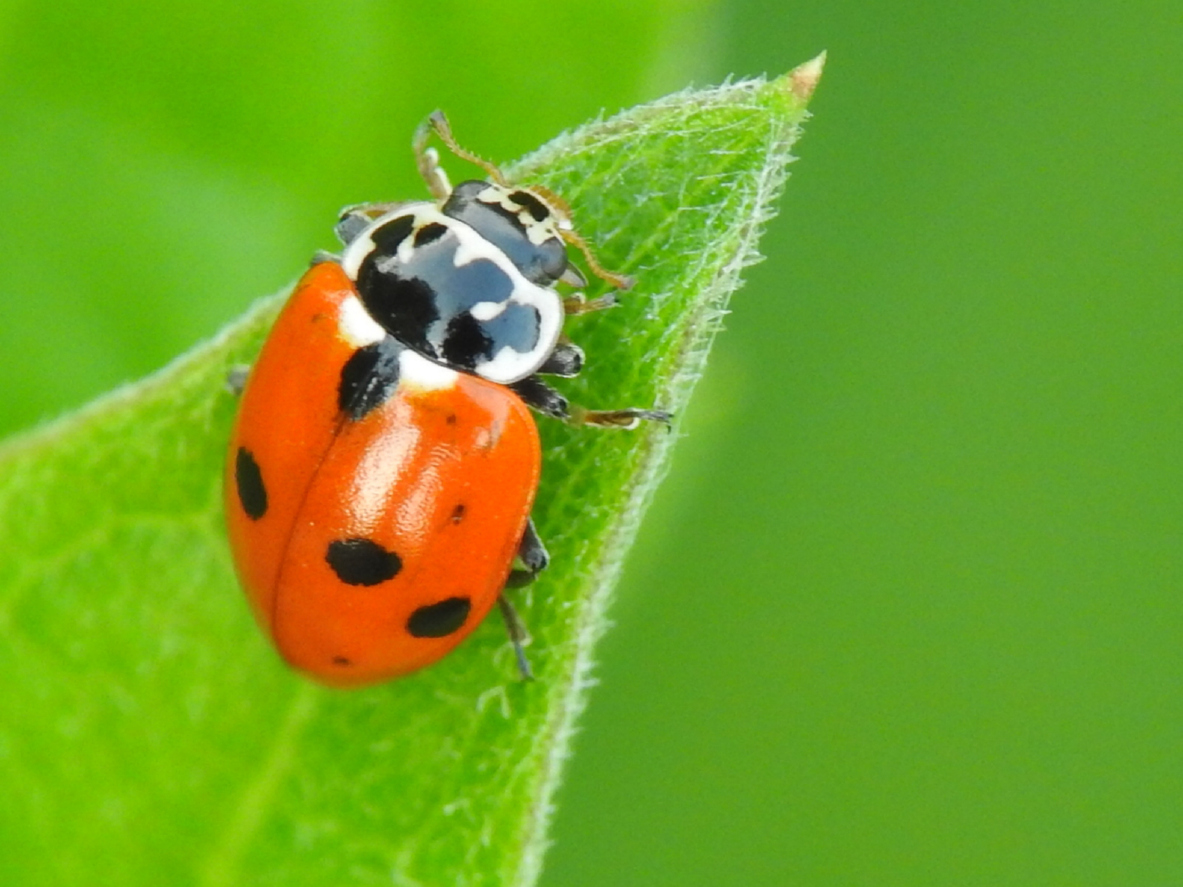
Study Shows Fate of Multiple Bt Proteins from Bt Maize in the Predatory Lady Beetle
August 19, 2020| |
Researchers from Agroscope in Switzerland investigated the fate of multiple Bt proteins from stacked Bt maize (SmartStax) in non-target predatory lady beetle (Harmonia axyridis). Their findings are published in Environmental Pollution.
Lady beetles in third and fourth instar stages were fed with pollen or spider mites from SmartStax maize with significant concentrations of Bt proteins, particularly Cry1A.105, Cry1F, Cry2Ab2, Cry3Bb1, and Cry34Ab1. Cry protein concentrations in lady beetle larvae were typically one order of magnitude lower than in the food. When the larvae were fed with Bt maize pollen, the level of Cry proteins was found to be below the limit of detection except for minimal concentrations of Cry34Ab1. When spider mites were used as food, no Cry protein was detected. The amount of Bt proteins was reduced quickly when the larvae were transferred from pollen or spider mites to food without Bt proteins. Aphids exhibited very low or no detectable Bt protein. The adults fed with Bt maize pollen laid eggs with no or trace amounts of Bt protein.
The results showed that the route of exposure for other natural enemies via lady beetle pupae or eggs is likely insignificant.
Read the abstract in Environmental Pollution.
| |
You might also like:
- Pocket K No. 6: Bt Insect Resistant Technology
- Philippines Research Shows Bt Eggplant Does Not Harm Non-target Insects
- GM Approval Database
Biotech Updates is a weekly newsletter of ISAAA, a not-for-profit organization. It is distributed for free to over 22,000 subscribers worldwide to inform them about the key developments in biosciences, especially in biotechnology. Your support will help us in our mission to feed the world with knowledge. You can help by donating as little as $10.
-
See more articles:
-
News from Around the World
- Evidence Shows GM Foods Do Not Cause Infertility
- Scientists Decode Complete Sequence of Human Chromosome X for the First Time
- Groups Push for Bt Brinjal Field Trials in India
- Europeans Now Less Skeptic About GMOs
- Wheat Gene Confers Stem Rust Resistance to Barley
- New Biofortification Method Transforms Leaves into Nutrient Stores
-
Research Highlights
- Study Shows Fate of Multiple Bt Proteins from Bt Maize in the Predatory Lady Beetle
-
Plant
- CRISPR-Cas RNA Targeting Using Transient Cas13a Expression in Nicotiana benthamiana
- Yield10's CRISPR Genome-Edited C3007 Canola Trait in 2021 US Field Tests
-
Health
- Researchers Discover Vulnerability in SARS-CoV-2
- Q&A: COVID-19 Pandemic's Impact on Food and Agriculture
- Team of Experts Develop Nasal Spray Against COVID-19 Virus
-
Read the latest: - Biotech Updates (April 24, 2024)
- Gene Editing Supplement (April 24, 2024)
- Gene Drive Supplement (February 22, 2023)
-
Subscribe to BU: - Share
- Tweet

